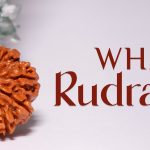Overview
Elaeocarpus is the botanical name of the Rudraksha seeds. It has various subspecies also, there are total 350 varieties of Elaeocarpus. So their fruits are almost similar in locations. As per the Shiva Purana, best variety is self-form hole beads. So self form hole is only there in the Nepal variety and hence Nepal is number one. Now, the other varieties, because they are similar looking, they all fall into one category Known as Bhadraksha.
From which trees does Bhadraksha originate?
Bhadraksha originates from trees known as Koenigii, Goodeniaceae, Scaevola Fruitescens, Lanceaefolius and Sikkimensis. The seeds of these varieties are flat, light in weight and not so thorny. Mostly available as two mukhi, they do not possess any natural hole. Some people use these beads for doing Japa and they also find mention in certain scriptures. Mostly used as a religious offering or as a mala with selective purposes.

Varieties of Bhadraksha
The Bhadraksha variety mostly comprises two mukhs and in very small numbers three mukhs. These flat beads do not find extensive and popular use as compared to rudrakshas. The South Indian One Mukhi as well as chapta (flat) two Mukhi are also termed as the Bhadraksha. The variety found in the Udaipur region of Rajasthan doesn’t have a fruit also, the entire Rudraksha is like a seed and some which are grown in Hawaii. They don’t have an actual hole. Those are all come in the category of Bhadraksha.

Can Bhadraksha have negative effects?
Bhadraksha does have not any negative effects because it’s just a seed of a fruit, but they will not give you the effects of the Nepal variety.
What are the differences between Rudraksha and Bhadraksha?
- Rudraksha beads are spherical or oval and the Bhadraksha beads have considerably more compressed or flat shape.
- Bhadraksha is lighter in weight than Rudraksha. Because the density of Bhadraksh is less. The protrusions on the surface of the Rudraksha beads are sharper and rougher than Bhadraksha.
- Bhadraksha beads are also a bit thin. These are less intense and shallow than Rudraksha.
- Best-quality Rudrakshas are primarily found in Nepal. Bhadrakshas are more abundant in India and Sri Lanka.
One Mukhi Rudraksha is Bhadraksha?
The round Nepal one Mukhi Rudraksha bead is a myth. Though they are mentioned in Puranas they are non-existent. As per Rudralife’s research and experience the One Mukhi Nepal beads sold in the market are fakes. People should avoid purchasing them as they are costly and designed to trick the normal eye.
The half-moon shape beads or cashew nut shaped from South of India (Elaeocarpus Tuberculatus) are an alternate for the Nepal one Mukhi variety. It comes in the category of Bhadraksha but It is a good substitute.

If a person wants to go for one Mukhi, Why Rudralife endorses these South Indian varieties? Because we have seen good results in terms of concentration and focus. It is very good for doctors and teachers. So people can wear one Mukhi half-moon shaped, but you cannot expect the results of the mythical One Mukhi of Nepal.
How to test if a bead is Rudraksha or Bhadraksha?
You can connect with us and use our Rudraksha Research and Testing Laboratory (RRTL) to establish whether your bead is Rudraksha, Bhadraksha, or a genuine Rudraksha.
We conduct x-ray studies and several other tests to ensure not only that the beads are pure and authentic but to make sure that these are having inner power and hence efficacy.


















I have a rudraksha tree in my garden. Its 8yrs old and this year I have got a few seeds. Just about fifteen big and a few smaller . I noticed that they are all 3 mukhi. There is no hole. They are light beige in colour. I want to know if you can value them for me in terms of energy, cost etc. I would be grateful to know what exactly I should do with them as they will start to increase in number every year. Could I send you a sample. I live in South Goa, just close to the karnataka border. Please let me know. My ph no is 9405216080.
Thank you Sagari Joshi
Hi , in my colony where I live in dehradoon, there is a tree of rudraksha bearing 3 mukhi . Someone told me that planting rudraksha is not advisable in home
Please tell me whether I can plant in my home garden?
Please delete my previous comment. Thank you.